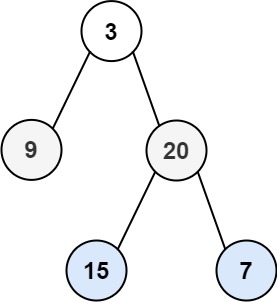Given the root of a binary tree, return the level order traversal of its nodes’ values. (i.e., from left to right, level by level).
Example 1:
Input: root = [3,9,20,null,null,15,7] Output: [[3],[9,20],[15,7]]
Example 2:
Input: root = [1] Output: [[1]]
Example 3:
Input: root = [] Output: []
Constraints:
- The number of nodes in the tree is in the range [0, 2000].
- -1000 <= Node.val <= 1000
Runtime: 80 ms, faster than 82.71% of JavaScript online submissions for Binary Tree Level Order Traversal.
Memory Usage: 40.9 MB, less than 7.95% of JavaScript online submissions for Binary Tree Level Order Traversal.
/*** Definition for a binary tree node.* function TreeNode(val, left, right) {* this.val = (val===undefined ? 0 : val)* this.left = (left===undefined ? null : left)* this.right = (right===undefined ? null : right)* }*//*** @param {TreeNode} root* @return {number[][]}*/var levelOrder = function(root) {if (!root) {return [];}const result = [];const queue = [root];let level;let node;let n;while(queue.length > 0) {level = [];n = queue.length;for (let i = 0; i < n; i++) {node = queue.shift();level.push(node.val);if (node.left) {queue.push(node.left);}if (node.right) {queue.push(node.right);}}result.push(level);}return result;};

